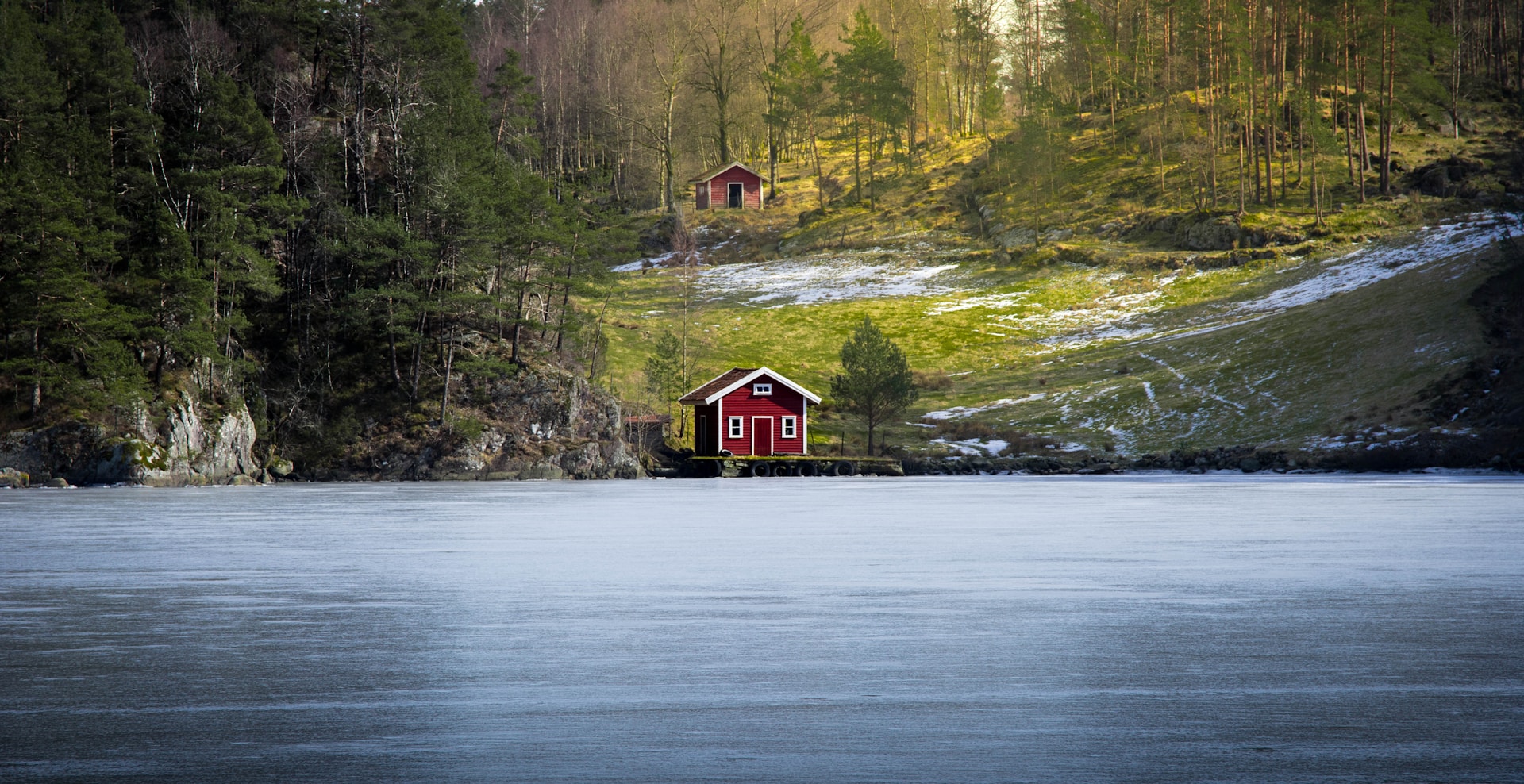
In an era where the urban life often overwhelms, the allure of a secluded retreat in the wilderness becomes ever more enticing. A place where the cacophony of city sounds gives way to the symphony of nature, where the stress of daily responsibilities dissipates like mist at dawn, and where the soul can find peace amidst the embrace of the natural world. Crafting your own private haven in the wilderness is a dream many harbor, and with careful planning, thoughtful design, and a deep respect for the environment, it can be realized. This article will guide you through the journey of creating your very own secluded sanctuary, a testament to the beauty of simplicity and solitude.
Cover photo by Lachlan Gowen
The Vision: Defining Your Secluded Haven
Before embarking on this wilderness adventure, it’s crucial to have a clear vision of what your private haven will be. This begins with selecting a location that resonates with you—a spot where the landscape speaks to your heart and inspires your design choices. Whether it’s a lakeside cabin, a mountain-top abode, or a riverfront retreat, your vision should encompass not just the structure itself but also the relationship between your dwelling and its surroundings.
Choosing Your Site: Factors to Consider
Selecting the right site is pivotal to achieving seclusion and serenity. Here are some key factors to consider:
– Accessibility vs. Isolation. Determine how accessible you want your retreat to be. A remote location will offer greater privacy but may require a longer journey. Consider the trade-offs of convenience versus isolation.
– Land Features. Look for land with features that complement your lifestyle, such as water sources, natural shelter, or existing trails. Assess the topography and climate to understand how they will influence your living experience.
– Local Regulations and Zoning Laws. Ensure that you are aware of and compliant with local building codes, zoning laws, and environmental regulations. Some areas have specific guidelines for construction to protect the natural landscape.
– Sustainability. Consider the environmental impact of your project. Aim for sustainability by using eco-friendly materials, minimizing habitat disruption, and implementing green technologies such as solar power or rainwater harvesting systems.
Designing Your Retreat: Blending with Nature
The design of your retreat should be a harmonious blend of functionality and aesthetics that complements the natural environment.
Here are some design principles to keep in mind:
– Site Analysis. Study the sun’s path, prevailing winds, and drainage patterns to optimize your building placement for energy efficiency and comfort.
– Eco-Friendly Materials. Use materials that blend with the environment and have a minimal carbon footprint. Timber from sustainably managed forests, locally sourced stone, or recycled materials can all contribute to an eco-conscious build.
– Minimal Impact. Design your retreat with minimal disruption to the existing landscape. Preserve natural features like old-growth trees, rock formations, and water features that add character and tranquility to your space.
– Integration with Nature. Create a seamless transition between indoors and outdoors through large windows, expansive decks, or sliding glass walls. Design outdoor living spaces such as fire pits, outdoor kitchens, or hot tubs that encourage you to spend time in nature.
Building Your Retreat: A Symphony of Structure and Nature
Once the design is set, it’s time to bring your vision to life through construction.
This phase requires careful planning and execution:
– Contractors and Builders. Choose professionals with experience in sustainable building practices. Ensure they share your commitment to preserving the natural beauty of the site.
– Building Techniques. Employ construction methods that have a light touch on the land, such as pile foundations for sensitive areas or rammed earth for stability and insulation.
– Landscaping. Integrate native plants and trees to maintain the natural character of your retreat. These species are adapted to the local climate and require less maintenance, which aligns with the ethos of seclusion and simplicity.
Living in Harmony: Maintaining Your Secluded Haven
Creating a sustainable and self-sufficient lifestyle is essential for maintaining the allure of your wilderness haven.
Here are some tips for living in harmony with your environment:
– Energy Independence. Invest in renewable energy sources like solar panels or wind turbines to power your retreat. Consider battery storage systems to ensure a consistent energy supply.
– Water Management. Implement rainwater collection and greywater recycling systems. Use native plants that require less irrigation and are more resistant to pests and diseases.
– Waste Reduction. Practice waste reduction by composting organic matter, recycling whenever possible, and minimizing the use of single-use plastics and other non-biodegradable materials.
– Maintenance and Upkeep. Regularly inspect your retreat for any signs of wear or damage. Perform routine maintenance to ensure that your home remains a comfortable and safe place to live.
The Experience: Embracing the Serenity of Your Wilderness Retreat
Living in a secluded haven in the wilderness offers a unique set of experiences that can enrich your life. Here are some ways to embrace the serenity of your retreat:
– Observing Nature. Take time each day to observe the natural world around you. Notice the changes in light, weather patterns, and wildlife behavior. This mindfulness can foster a deeper connection with the land.
– Solitude and Reflection. Use your retreat as a sanctuary for solitude and reflection. The absence of external distractions allows for introspection and personal growth.
– Activities and Exploration. Engage in activities that complement the natural setting, such as hiking, birdwatching, fishing, or simply reading in a hammock. Explore the surrounding wilderness to discover its hidden treasures.
Sharing Your Haven: The Ripple Effect of Seclusion
While seclusion is often sought for its peace and tranquility, there’s also an opportunity to share your haven with like-minded individuals. Consider hosting workshops, retreats, or offering guided tours to educate others about sustainable living and the importance of preserving natural habitats. This can create a ripple effect, inspiring others to seek out their own secluded sanctuaries and live in harmony with nature.
Conclusion: Your Personal Oasis in the Wilderness
Crafting your own private haven in the wilderness is not just about building a structure; it’s about creating a lifestyle that aligns with your values, respects the environment, and provides a sanctuary from the demands of modern life. It’s a journey of design, construction, and continuous adaptation to your surroundings. As you live out each day in this secluded serenity, you’ll find that the wilderness isn’t just something to retreat to; it’s an integral part of who you are and how you live.
In the end, your private haven is more than a physical space—it’s a state of mind, a philosophy of life, and a commitment to the preservation of our natural world. It’s a place where you can reconnect with nature, yourself, and the essence of what truly matters in life. Embrace this opportunity to create your own secluded haven in the wilderness, and let it be a testament to the beauty of simplicity, the power of serenity, and the enduring allure of our untamed landscapes.


